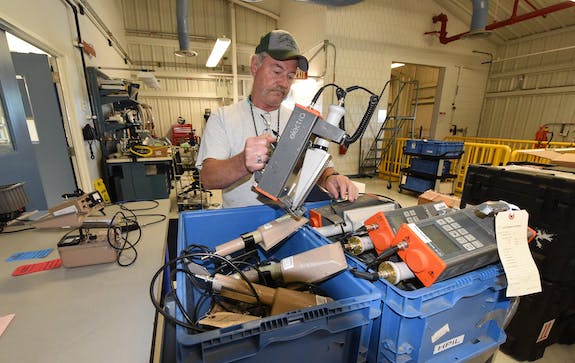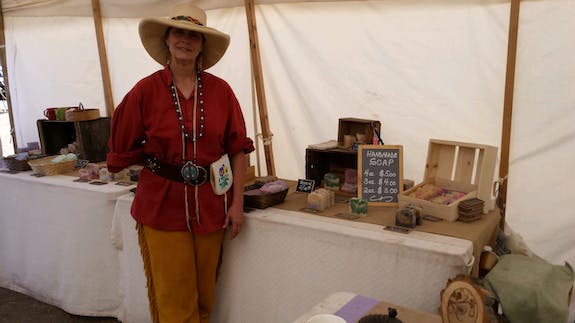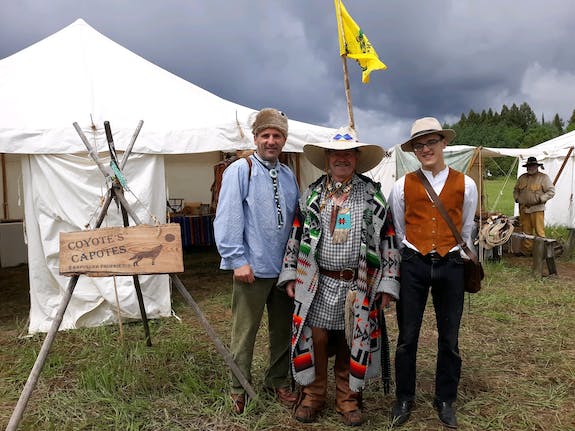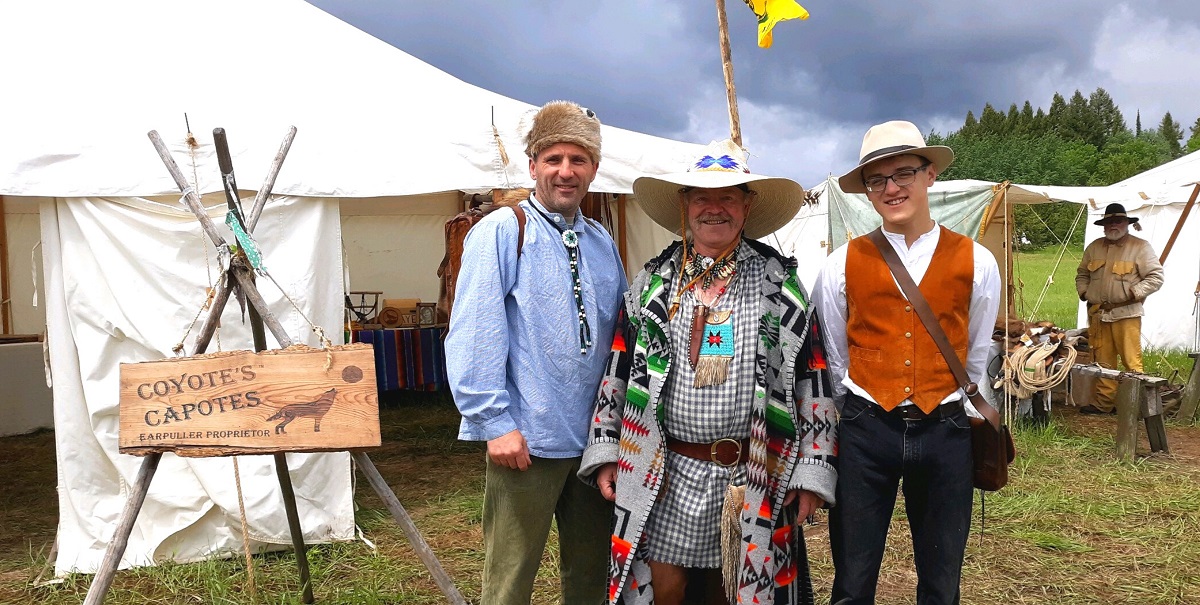Looking back over the last 45 years, life has offered Jack Montgomery interesting choices that he has rarely failed to embrace with enthusiasm. A calibration technician in Idaho National Laboratory’s Health Physics Instrumentation Laboratory (HPIL), Montgomery has literally been to every corner of the Site since he started work at the Naval Reactors Facility in 1976.

In his spare time, however, he goes by the name of Ear Puller, and travels to mountain man rendezvous gatherings in Idaho and Wyoming. “I like to talk a lot,” he says, explaining how he came by the nickname. He and his wife, Debbie, who goes by the name Singing Bird, go to the gatherings to sell and trade their wares. Doing business as Coyote’s Capotes, Montgomery offers warm hooded coats made from blankets while Debbie offers soaps and lotions that she makes in their Blackfoot home.
“She keeps me clean, and I keep her warm,” says Montgomery. “That’s a pretty good combination.”
After a brief stint at NRF as a quality control technician, Montgomery went to work in the Idaho National Engineering Laboratory radio shop in January 1978. The job involved calibrating two-way radios for the fire department and security services and maintaining INEL’s repeater sites in such far-flung locations as Island Park, Palisades and Pocatello. During the 17 years he spent in the radio shop, the Site’s communications shifted from tube technology to solid state.
Montgomery’s INL career has also included time working as a Life Safety technician. He also worked at the Test Reactor Area (TRA), where he was a nuclear material custodian inspecting fuel rods and stored material from the Materials Test Reactor (MTR), Engineering Test Reactor (ETR) and Power Burst Facility (PBF). After five or six years, there was an opening at the TRA Hot Cells, where iridium and cobalt was processed for outside companies. Then it was back to the radio shop at Central Facilities Area (CFA). From there, he moved to the physical security group at the Materials & Fuels Complex (MFC). He landed at HPIL in 2013.
It was in the radio shop in 1980 that Montgomery learned about mountain man reenactments. A co-worker sold him a muzzle-loading rifle and told him about the rendezvous taking place at Massacre Rocks State Park. There are rendezvous at many locations around the nation.

“I’ve always loved stuff like that,” he said. Growing up on a ranch in south Custer County’s Lone Cedar Creek area, he’d always been inspired by cowboys. When he went to Massacre Rocks, “I just thought it was the coolest thing. I got hooked. I loved looking around and seeing how people made things and traded with each other.”
Authentic dress is important at a rendezvous. Montgomery started with knee-high Apache moccasins, a leather vest and blue jeans, but he saw some old World War II-vintage olive drab Army blankets and got the idea to make a capote, a long coat with a hood that dates back to the early days of the North American fur trade. The history of capotes can be traced back over 900 years. Both Native Americans and French-Canadian voyageurs made wool blankets into capotes to cope with Canada’s cold winters. They made their way to the American West on the backs of such legendary figures as Jim Bridger and John Colter.
Montgomery had some experience sewing buckskin vests and asked his mother how to cut blankets into patterns he could sew together by hand. By the time of his next rendezvous, he was decked out. A woman asked him how much he wanted for the coat, and he ended up trading it for a black powder pistol.
Sensing a niche, he went to the Army Surplus Store – when it was the old stone building on Broadway – and found patterned blue and white blankets. “I think they were either Swedish or Swiss,” he said. As Montgomery started making capotes in earnest, co-workers told him he needed a trademark. He chose the name Coyote’s Capotes, and with the Internet emerging, he set up a webpage with help from MicroServ.
Around the same time, he was watching an episode of “Dr. Quinn, Medicine Woman” and noticed Sully, played by Joe Lando, was wearing an ugly, inauthentic poncho. He sent Lando a letter asking whether he would be interested in a capote, red with a black stripe. Lando said yes, and the deal was done. “It was just a gift, but after putting a picture of him on my website, I was doing pretty good,” he said.
Seeking authenticity, Montgomery turned to Woolrich blankets, a company that opened its first mill in Pennsylvania in 1830 and made blankets for both the Union and Confederate armies in the Civil War. When the European company that bought Woolrich closed the Pennsylvania mill in 2018, he turned to Pendleton Woolen Mills. “At least for now, they’re still made in America,” he said.

In 1997 he met Debbie, who admired one of his capotes but didn’t have the money to buy one. “I’m not really in this for the money, so I said, ‘Pay me when you can.’ She paid the following year and bought another one.”
Since they met and married, they have been to dozens of rendezvous. Age has made setting up a teepee more work than they want, so they have made a concession to modernity with a travel trailer. Singing Bird Soaps does brisk business. “She’ll take 900 bars to a rendezvous and be lucky to come home with ten,” Montgomery said.
If there’s one rendezvous not to be missed, it’s the one at Fort Bridger, Wyoming, held every Labor Day weekend. The event typically attracts 35,000 people and features contests and competitions, games for kids, music, demonstrations of the fur trade era skills, and historic reenactments. For Montgomery, however, the magic happens in the evening, when all the visitors have left.
“After the sun goes down, the teepees start glowing with light from inside,” he said. “It really is something to see.”
Hobbies are fulfilling, and fulfilled people make more productive employees. Hobbies unearth hidden skills, alleviate stress, unite you with others, and improve quality of life — all things that will help you function better at work. See other stories about Idaho National Lab employees.







